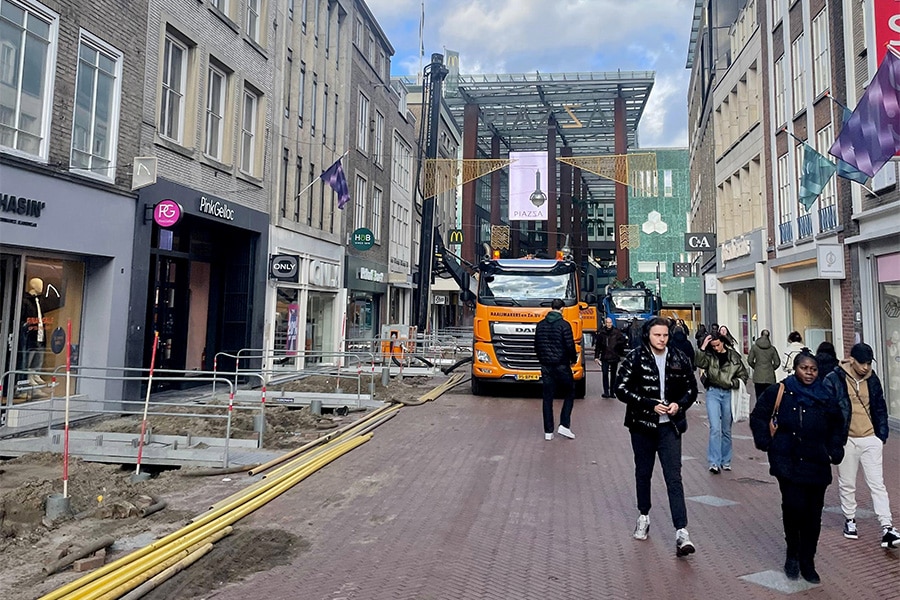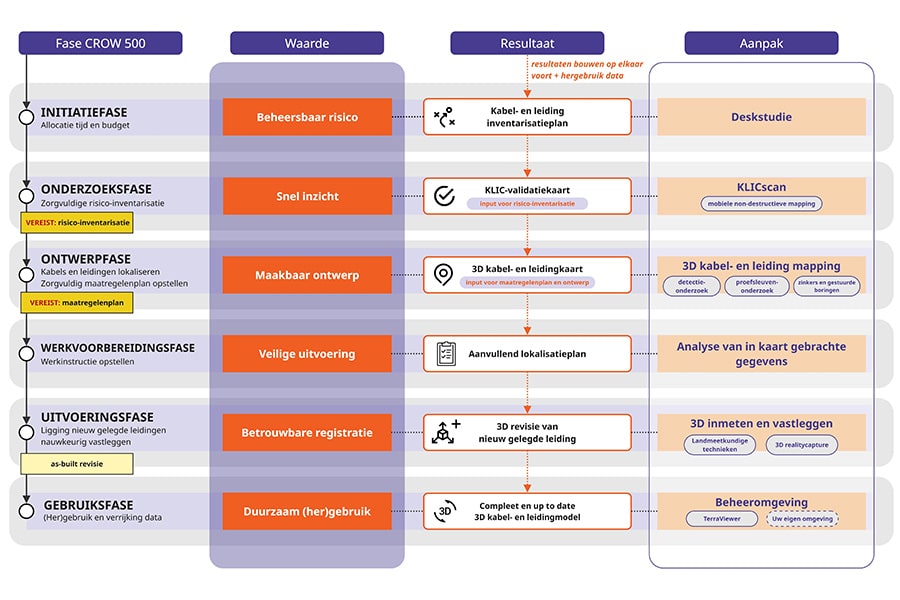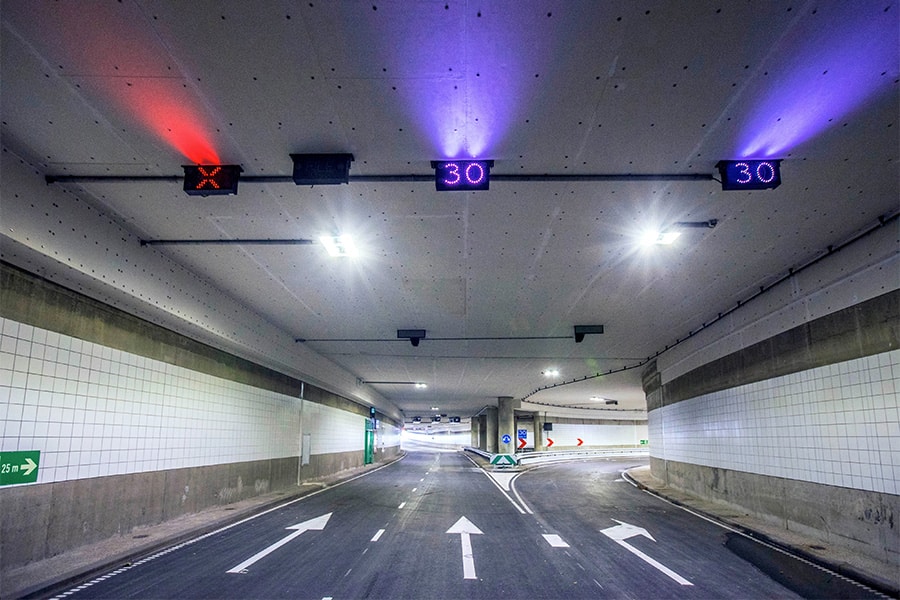
The underground future of pipelines
Laying pipes and tubes for the transport of gas, water, electricity and telecom services, GW Leidingtechniek from Helmond is at home in all these markets. In doing so, it leaves the work area unscathed after the work is done. "Underground infra cannot exist without above-ground infra. They belong together." But a true specialist is GW Leidingtechniek in the pipelines dealing with water.
"We are talking about all types of water," says Harm van Ganzenwinkel, director of GW Leidingtechniek. "Think about drinking water, fire water, waste water and water for district heating and CHP systems. Water is among our first necessities of life. That requires special care. You have to work hygienically and protected. We have something to do with that." With twenty-five skilled employees and a flexible shell, GW Leidingtechniek has now been active in underground infrastructure for six years. The size of the company makes it large enough for large-scale projects and flexible enough for small-scale assignments.

Firewater as a specialty within the medium of water
In addition to waste and drinking water, GW Leidingtechniek gained extensive experience in the fire water sector in recent years. This is no coincidence. "Extinguishing water is an issue right now. Now that companies are becoming more conscious of our resources, they no longer want to extract fire extinguishing water from the drinking water network. This has led to a search for alternative ways to have firewater available, including within GW Leidingtechniek. We are among the few companies that are CIBV-certified for the construction and maintenance of ground-based fire extinguishing water networks with any required sump pumps. These pump wells draw water from, for example, canals, rivers or storage silos. On a large industrial estate in Almelo, we constructed two tranches/networks for this purpose, made a cast-iron ring main (Ø 400 mm) with the necessary above-ground extinguishing hydrants and building connections, fed from a fire water building. To the system in the extinguishing building, the extinguishing system for the entire site is connected, including the sprinkler systems of all buildings present."
Drilling and sealing pipes under pressure
GW Leidingtechniek has specialized in tapping and sealing pipes without taking them out of service. This is possible for all types and diameters of pipes. Depending on the type of material, we determine whether to weld a tubelure or mount a clamp with a branch. A valve is then fitted to a tubelure or clamp. Before the pipe is actually drilled through, the fitting is tested for the desired pressure.
"By means of an innovative, hydraulically controlled drilling machine, which we mount to the valve, all diameters ranging from DN 100 to DN 1200 mm can be drilled. This drilling method is also used to seal the pipe. After drilling, a sealing balloon is inserted into the pipe using a special lance and pressurized," Van Ganzenwinkel says.

Renovation
GW Leidingtechniek is also leading the way in the renovation of pipes and ducts. With pipes and ducts everywhere in the country reaching their maximum lifespan at the same time, there is a need for techniques whereby - especially in city centers - renovation can take place without opening up the roads. For this, GW Leidingtechniek has all the techniques in-house. For example, the pipe-in-tube method, GRP pipe or plating methods, spray techniques and the liner methods. GW Leidingtechniek introduces a new technique within the liner method: the blueline method. "The current liner methods are only intended for free-falling pipes, where the 'stocking' is applied to the inside of a pipe and the existing pipe continues to determine the strength," Van Ganzenwinkel explains. "Our innovative blueline method basically uses the same method, only in this technique the sleeving, which is cured by the addition of steam or water, takes over the full strength of the existing pipe. This creates a full strength pipe. The renovated pipe complies with the PN6 pressure class and with its new inner pipe it can last for years again."
In Switzerland and Germany, the blueline method has been a proven technique for more than five years. Van Ganzenwinkel: "So we could have put the method on the market five years earlier, but we wanted to make sure that there were no more teething problems. In addition, the method has the German TÜV seal of approval, but not yet the Dutch KIWA seal of approval. We have been working on this for almost two years now and the final stage is in sight." The renewed blueline method offers a solution for renovation of pressure pipes, both waste and drinking water pipes.

Knowledge building
"We love this kind of challenge. Innovating suits our people. They put their shoulders to the wheel together until the right solution is found. As a result, we have a lot of specialized knowledge in-house. To keep this knowledge on board, we like to invest in our people. Many construction workers have found their niche within GW Leidingtechniek, but when they were young they were reluctant to study. We encourage them to continue to grow and obtain an MBO diploma. We guide them in this and offer training time during working hours. Our clients require our people to be trained and have certain certificates. Virtually all of our construction site employees have the KIAD certificate."
Engagement back and forth
The success, shared challenges and sense of belonging give GW Piping Technology a special working atmosphere. "When people are here for a while, you can see that a kind of GW blood starts flowing through their veins. We involve our people in everything that happens and they give their commitment in return. My office door is also always open. Anyone can always walk in, whether they work in the trench, are an engineer or a draftsman. I want to hear their ideas, because I know it will help us move forward. That's why I involve people throughout the project. Preferably from design to management. The calculator also remains closely involved in the project during execution, and the draughtsman can also be found at the trench. In this way, theory and practice remain one."

D&C and construction team contracts
The creative attitude also fits in seamlessly with the D&C and construction team contracts, with which government agencies nowadays tender their works. "The entire process, from preliminary and final design to execution design and environmental management, then falls under our responsibility. That involves a lot. We have to put the best design on the table, then go through the permit process and then execute the work. But within the club, the days when such a challenge comes in are the best days ever."
GW Leidingtechniek is broadly certified and particularly for work related to infra, sustainability
and environment.




